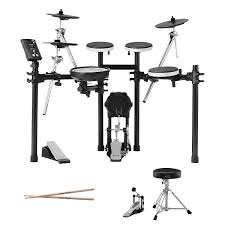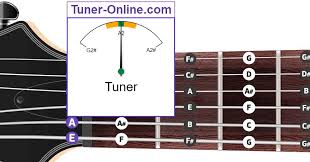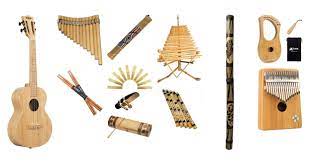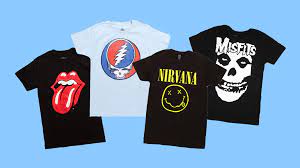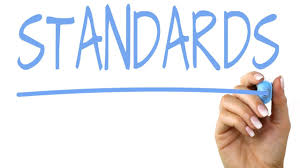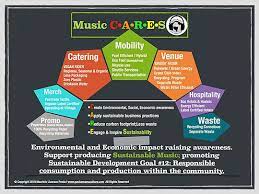The Art of Drumming: Exploring the Kit Drum
Drums have been an integral part of music for centuries, providing rhythm and energy to countless musical genres. Among the various types of drums, the kit drum stands out as a versatile and dynamic instrument that forms the backbone of many bands and ensembles.
The kit drum, also known as a drum kit or drum set, typically consists of a combination of drums, cymbals, and percussion instruments played by a single drummer. The components of a standard kit drum include:
- Bass drum: The largest drum in the kit, played with a foot pedal.
- Snare drum: A central drum with a distinctive sound, usually positioned between the drummer’s legs.
- Toms: Smaller drums placed above the bass drum or to the side, providing additional depth to the sound.
- Cymbals: Various types of cymbals such as hi-hats, crash cymbals, and ride cymbals that add shimmer and accents to the music.
- Percussion accessories: Additional instruments like cowbells, tambourines, and wood blocks that enhance the rhythmic texture.
What sets the kit drum apart is its ability to create intricate rhythms and textures through coordinated limb movements. A skilled drummer can produce complex patterns by using different combinations of drums and cymbals while maintaining precise timing and dynamics.
Kit drums are commonly used in rock, jazz, pop, funk, and many other genres due to their versatility and expressive capabilities. Drummers often personalise their kits by choosing specific brands, sizes, and configurations that suit their playing style and musical preferences.
Whether driving a powerful rock beat or laying down subtle jazz grooves, the kit drum is an essential instrument that adds depth and character to any musical composition. Its role in shaping the overall sound of a band cannot be overstated.
Next time you listen to your favourite song, take a moment to appreciate the rhythmic foundation provided by the kit drum. It’s not just an instrument; it’s an art form that continues to inspire musicians and audiences alike.
Common Questions About Drum Kits: Components, Terminology, Costs, and Configurations
- What are the drums in a kit called?
- Is it a drum set or kit?
- How much is a drum kit cost?
- What is a 4 piece drum kit?
What are the drums in a kit called?
In a kit drum, the individual drums have specific names based on their size, position, and function within the ensemble. The main drums in a standard kit drum setup are the bass drum, snare drum, and toms. The bass drum, also known as the kick drum, provides the deep low-end foundation of the rhythm. The snare drum produces a sharp and distinctive sound and is often placed between the drummer’s legs. Toms are smaller drums that come in various sizes and are positioned above or to the side of the bass drum, adding depth and texture to the overall sound. Additionally, cymbals such as hi-hats, crash cymbals, and ride cymbals play a crucial role in providing accents and tonal variety to the kit drum’s sonic palette. Each drum in a kit has its unique characteristics and contributes to creating a cohesive and dynamic rhythmic framework in musical performances.
Is it a drum set or kit?
The question of whether to refer to the collection of drums, cymbals, and percussion instruments as a “drum set” or a “kit” is a common query among music enthusiasts. While both terms are widely used interchangeably, some musicians and purists may argue for subtle distinctions between them. “Drum set” is often seen as the more traditional term, harking back to the early days of drumming when individual drums were arranged in sets. On the other hand, “kit” is considered a more modern and informal term that reflects the versatile and customisable nature of contemporary drum setups. Ultimately, whether you call it a drum set or a kit, what matters most is the music created with these instruments and the passion behind the drumming art form.
How much is a drum kit cost?
The cost of a drum kit can vary significantly depending on various factors such as the brand, quality, size, and included components. Entry-level drum kits designed for beginners can be found for around £200 to £500, offering basic drums and cymbals suitable for practice and learning. Mid-range drum kits with better construction and sound quality typically range from £500 to £1500, catering to intermediate drummers looking for improved performance. High-end professional drum kits from renowned brands can cost upwards of £2000 or more, featuring top-tier materials, craftsmanship, and customisation options. It’s important to consider your budget, skill level, and musical goals when choosing a drum kit that suits your needs and preferences.
What is a 4 piece drum kit?
A 4 piece drum kit typically refers to a drum set configuration that consists of four main components: a bass drum, a snare drum, and two tom-toms. This setup is considered a minimalist approach compared to larger kits with more drums and cymbals. The bass drum provides the low-end thump, the snare drum offers crisp backbeats, and the tom-toms add depth and versatility to the drummer’s sound palette. Despite its simplicity, a 4 piece drum kit can be incredibly effective in various musical styles, offering a balanced mix of essential elements for creating rhythmic patterns and grooves.

